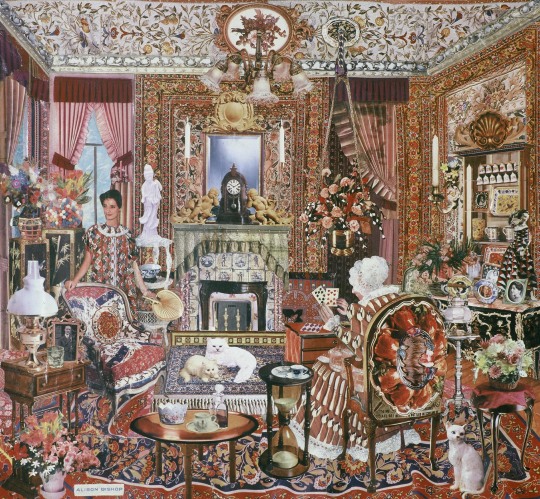#cornell library
Text
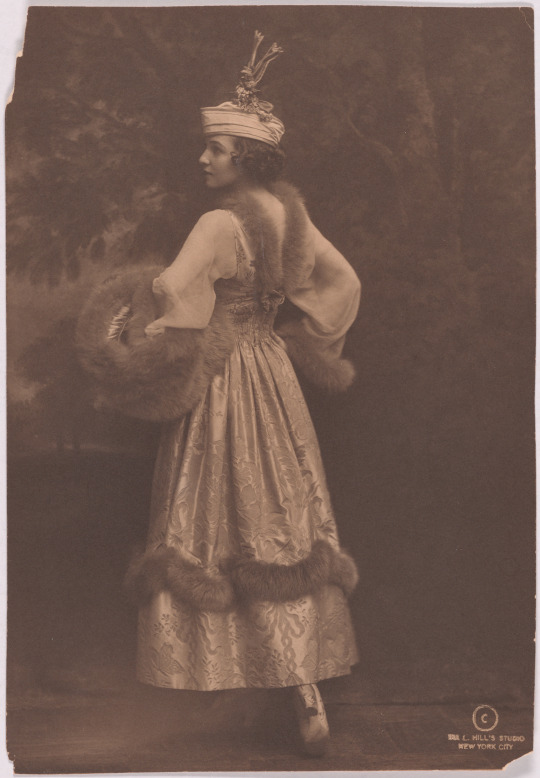
Ira L. Hill :: Irene Foote Castle (1893 - 1969), ca. 1920. Gelatin silver print. National Portrait Gallery, Smithsonian Institution
view more on wordPress
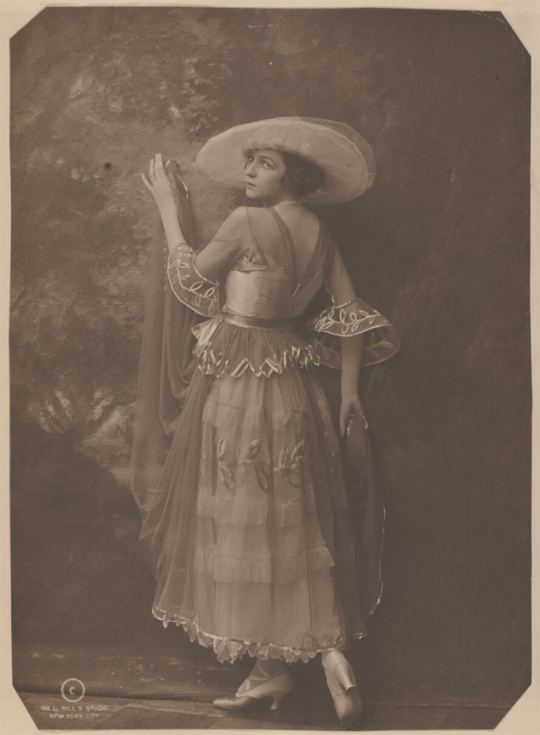
Ira L. Hill :: Irene Castle (1893 - 1969), 1910s. Other fashion photos. | src Cornell Library
#Ira L. Hill#irene castle#fashion design#fashion photography#Modefotografie#photographie de mode#headdress#headgear#ira l. hill studio#Ira Lawrence Hill#Ira Hill Studio#Ira Hill#1910s#irene foote#npg#smithsonian#studio photography#fotografía de moda#fotografia di moda#cornell library
53 notes
·
View notes
Text
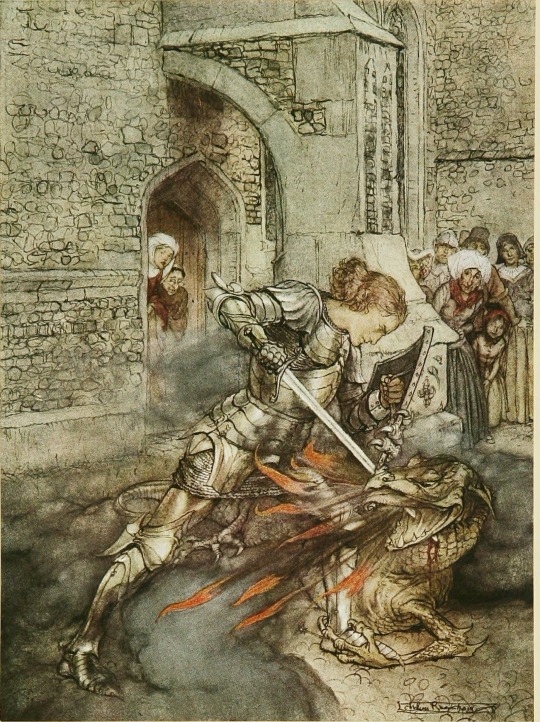
How Sir Launcelot fought with a fiendly dragon, illustration by Arthur Rackham from The Romance of King Arthur and His Knights of the Round Table, adapted from Sir Thomas Malory by Alfred W. Pollard and published by Macmillan in 1917
#art#art history#Arthur Rackham#illustration#Sir Lancelot#Lancelot#Lancelot du Lac#Arthurian legend#Arthurian mythology#Arthuriana#British art#English art#20th century art#Cornell University Library
1K notes
·
View notes
Text
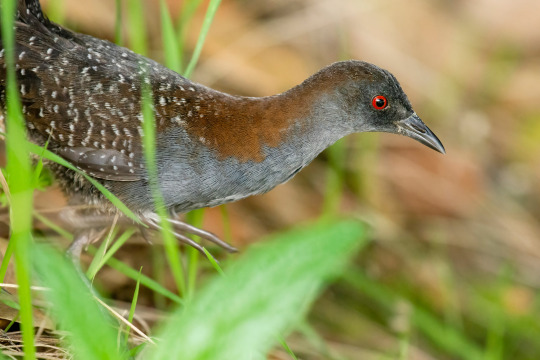
An eastern black rail, among the most elusive birds a biologist can study, walks through marsh grass.
Photograph by Marky Mutchler, Macaulay Library, Cornell Lab
#marky mutchler#photographer#macaulay library#cornell lab#eastern black rail#bird photography#animal#nature
12 notes
·
View notes
Video
n48_w1150 by Biodiversity Heritage Library
Via Flickr:
The Garland of the year, or, The months: their poetry and flowers : London :Marcus Ward & Co.,[1873]. biodiversitylibrary.org/page/58434928
#Flowers in literature#Months#Poetry#Cornell University Library#bhl:page=58434928#dc:identifier=https://biodiversitylibrary.org/page/58434928#flickr#april#daffodil#Narcissus#poem
6 notes
·
View notes
Text
Pomodoro and Cornell study technique: PART 1
having an exemplary method for taking and reviewing notes is imperative if you want to improve your understanding of the material covered in class.
Cornell note-taking method
what is it
the Cornell method is a note-taking method that aims to improve grades by creating a more efficient note-reviewing system
the process
the page is split into three distinct sections (the note-taking area, the cue column and the summary area) and each has a specific purposes
during the lesson notes should be recorded within the "note-taking section". in this section of the page aim to write notes that are as complete and informative as possible. when you get to summarizing the notes, it will be helpful as you will have more to work from
the cue column is the area to the side of the page where words that are specific but relatable to the notes go. this column plays a major role when it comes to reciting the information and assessing how much of the information you truly understand. these words should act as gentle reminders or prompts for the content covered in the "note-taking area". filling in this column should be left until after class when more time can be allocated to thinking of a suitable word
the summary should reiterate the content from the "note-taking area" and rephrase it in a simpler way that uses fewer words. it can be found at the bottom of the page and makes it easier, at a glance, to see what is covered in the notes
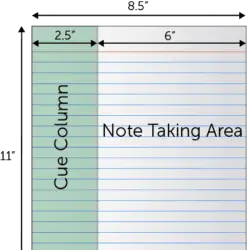
why use this method
as you can see due to the colour coding each section works together in this method to achieve the 5 R's of studying
record
recording meaningful facts and ideas in the "note-taking section". at this point, it doesn't need to be neat. just an area to quickly get important information down
reduce
in the clue column choose a specific relevant word for each paragraph to act as clues for what the paragraph as a whole is talking about. This helps to clarify meanings, reinforces continuity and improves memory
recite
cover up the note-taking section and, using those "specific relevant words " in the clue column try and write down the information from the notes from memory. using this method of reciting means that you can visibly see the gaps in your knowledge
reflect
find out how the notes are relevant to your course of study or class and make your own opinions on the process or organisation. Knowing its relevancy helps to avoid it being forgotten as it implies that you have a deeper understanding of the matter
review
spend at least 10 minutes a week going over the notes and testing yourself on the subject matter in order to fully ensure that you understand
the website used to gather this information
#university#study tips#studyblr#Cornell method#uk universities#studying#study notes#student life#studywithme#study motivation#future reference#for later#save for later#higher education#study hard#studygram#study space#zoology#libraries
34 notes
·
View notes
Text
Lorenzo Langstroth unvarnished

Lorenzo Langstroth, 1890. From Langstroth on the hive & honey bee, rev. by Dadant. 1892.
December 25th, Christmas Day, is a day for sharing and giving. It also happens to be the birthday of a man known as the father of American beekeeping: Lorenzo Langstroth, born Philadelphia, Pennsylvania in 1810. With both happy occasions in mind, Mann Library is pleased to announce a resource that we’re pretty sure students of beekeeping and its history will find a wonderful gift: a fully digitized, searchable copy of Langstroth’s handwritten personal journal. Where a researcher would have once had to make an in-person trip to our special collections reading room to attempt a deciphering of Langstroth’s (infamously difficult to read) handwriting, the journal is now freely available (and actually readable!) as both a digitized version of the original work and in a transcribed form as part of the online Biodiversity Heritage Library.
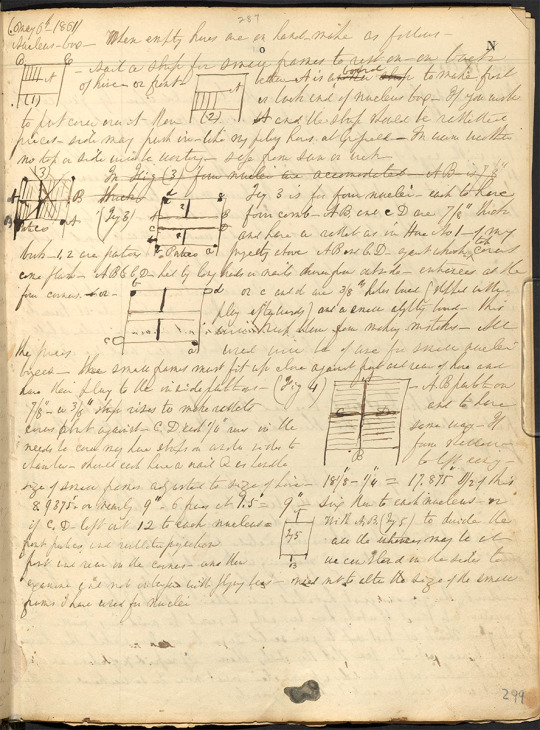
Page from "Journal on matters relating to bees, etc.," unpublished manuscript, Lorenzo Langstroth 1852-1895. in the special collections of Albert R. Mann Library, Cornell University.
For those not yet fully in the know, Lorenzo Langstroth looms large in American beekeeping history thanks to discoveries and inventions he made as a self-taught apiarist, innovations which essentially revolutionized the 19th century practice of beekeeping in North America and facilitated its development into the profitable industry of today. His guide on beekeeping, The Hive and the Honeybee, was first published in 1853 and remains in print even today. Langstroth’s story is also poignantly notable for a reason that you don’t have to a be a beekeeper to appreciate deeply: his struggles with debilitating depression, which stymied many of his professional endeavors. While working intermittently as a pastor and teacher when his mental health allowed, Langstroth found constant, life-affirming inspiration in the bee world he observed closely through the prism of the hives he kept for most of his adult life.
The history of beekeeping stretches back to prehistoric times, but when Langstroth patented his movable frame beehive in 1852 it created a worldwide revolution in the practice of keeping bees. On this page of his journal, we see the exact moment—the “aha” moment—that Langstroth landed on his brilliant insight: the significance of applying the concept of "beespace" to design hives that allow easier harvesting of honey than possible in earlier hive structures. The rest, as they say, is history.
The journal Langstroth kept is a treasure for several reasons. It provides fascinating insight into pivotal moments of beekeeping’s technological history. It is, as well, an intimate view of resilience in face of sometimes devastating mental health challenges. And last but really not least, in the comments and pet peeves that Langstroth also recorded in his ongoing notes-to-self, his off-the-record writing offers a more mundane but no less instructive tour through the day-to-day concerns—from keeping bee hives productive to the vexing challenges of protecting trade secrets and securing patents for promising new discoveries in a timely way—that would have been top-of-mind for any aspiring agricultural entrepreneur of the 19th century.
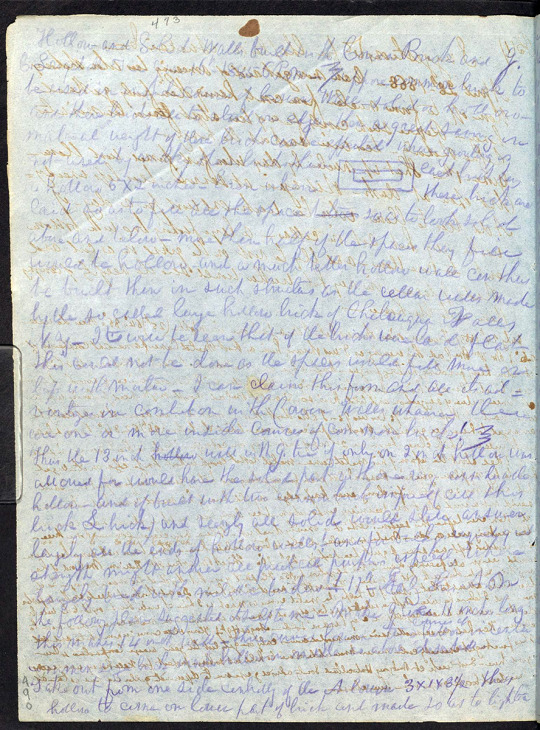
Page from "Journal on matters relating to bees, etc.," unpublished manuscript, Lorenzo Langstroth 1852-1895. in the special collections of Albert R. Mann Library, Cornell University.
The online availability of Langstroth’s journal in both its handwritten and transcribed form has been a work very long in the making. When early 20th century entomologist Everett Franklin Phillipps joined the Cornell faculty 1924, he made it his mission to establish one of the world’s most important collections of beekeeping materials—now known as the E. F. Phillips Collection at Mann Library. Recognizing the importance of one of this collections’ gems—the Langstroth journal—for the beekeeping field, Phillips began the painstaking process of transcribing 600 pages of its cramped, highly slanted script—rendered even more illegible by the frequent ink bleed-through from other pages—into easily readable typescript. The project remained unfinished at the time of Phillips passing in 1951, and others took up the work intermittently over the following decades. But it wasn’t until the epic pandemic-era national lockdown of 2020 that intrepid collections specialist Betsy Elswit finally found herself with the time needed to finish transcribing of the journal's final 200 pages. Thanks to this heroic work, a browse through the work on the Biodiversity Diversity Heritage Library today provides a look at Langstroth’s original writing with a side-by-side view of transcribed, machine-readable text. Thank you Betsy! And thank you, Reverend Langstroth, for persevering through the inspirational highs and deep lows of life to impact the practice of beekeeping so profoundly, and to leave us such a rich record of such remarkable scientific observation and personal achievement.
And with that, we leave you with our best wishes for a good, hope-filled winter holiday season!
#Langstroth#beekeeping#beekeeper#apiculture#mann library#cornell university#rare books#vintage book#archives#mental health#agricultural history#special collections#bees#honey#apiary#honey bees
11 notes
·
View notes
Text


Get to know your bird organizations:
Cornell Lab of Ornithology
The Cornell Lab provides quite a number of data-driven apps and repositories, with many of the contributions through citizen science (birders like you and me):
eBird (website and mobile app)
This has become the de facto app and website for submitting bird sightings. It's also great for researching birding hotspots all around the world. The website offers a great deal more information and functionality than the app (such as uploading photos to accompany your sightings, and providing you with your own central sightings hub complete with maps), so using them in tandem is the best strategy. All rare sightings are reviewed for accuracy by qualified volunteers.
Merlin (mobile app)
This is the app that gets a lot of press due to its ease of entry to the world of birdwatching. Hit the 'record' button and it will listen for bird calls and suggest species. It does a decent job of that. You can also upload photos of birds to see if they match anything in the database. Note however, that it has developed a bit of a reputation for frustrating ornithologists due to false positives that novices might not catch, suggesting rare birds that wouldn't be anywhere nearby, and thus tainting the eBird data.
All About Birds
Cornell's bird guide; search by species and it will provide a great deal of information. There's a lot of clicking involved (there's an Overview tab, an ID info tab, a Life History tab, a Maps tab), instead of the info being presented on a single scrollable page, but I enjoy their 'Cool Facts' section.
Macaulay Library
This is Cornell's media library (photos, videos, audio). When a photo or audio clip is submitted through eBird, it will then show up here in the archives, along with any additional information that the photographer might have included (e.g., how many are in the photo, is it male or female, is it foraging). The library has been operating since 1929, and has over 60 million pieces of media. The information included in the library helps to power the Merlin app, providing more photographs and audio clips for comparison purposes.
eBird Status and Trends data visualizer
Using the eBird data to track bird population increases and declines, as well as possible geographic shifts. The visualizer provides heat maps superimposed on a globe, and you can hit the 'play' button to see how things shift throughout the year.
Feeder Watch
This is a backyard counting project (in conjunction with Birds Canada) that is roughly the same as eBird, but for bird feeders and backyards. Participants spend two consecutive days per week (or as much as they can) watching to see who shows up, and you can compare your data to your neighbours. The data goes back decades, and you can use a few different visualizations to see trends.
Bird Academy
As Cornell is a university, they offer online classes. They range from the simple (eBird essentials; Free), to the more complex (Ornithology: Complex Bird Biology; $240 USD; 100+ hours to complete).
(Eastern Bluebird photo by @everydayesterday)
#north american birder#cornell lab of ornithology#cornell lab#ebird#feederwatch#macaulay library#merlin#birding#birdwatching
2 notes
·
View notes
Text
#btw I have both the sirens of titan and player piano#i have slaughterhouse but my copy of mother night is with a friend at cornell#and I dont have a copy of cats cradle but I really should#I also have access to a public library but I will not be walking there right now#given. everything going on#polls#kurt vonnegut#night reads
4 notes
·
View notes
Photo

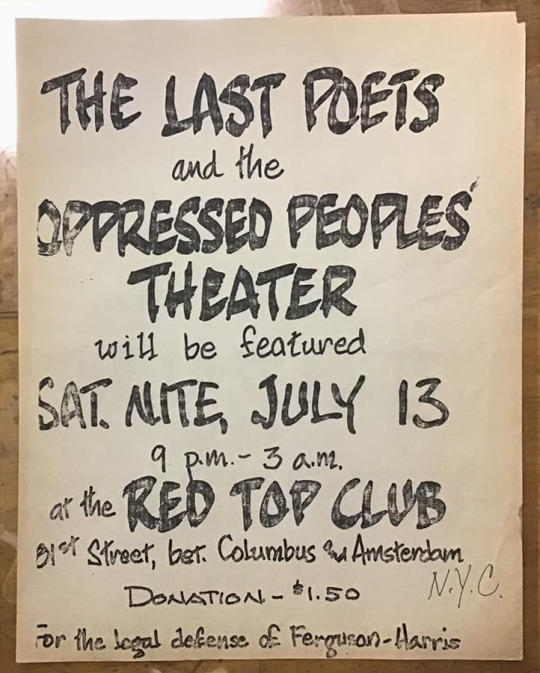
The Last Poets and the Oppressed Peoples' Theater will be featured Sat. nite, July 13.. at the Red Top Club, New York, NY, ca. 1969 [Hip Hop Flyer Collection, #8112m. Division of Rare and Manuscript Collections, Cornell University Library, Ithaca, NY]
#manuscript#art#music#poetry#handwriting#flyer#the last poets#david nelson#gylan kain#felipe luciano#red top club#cornell university library#1960s
26 notes
·
View notes
Text

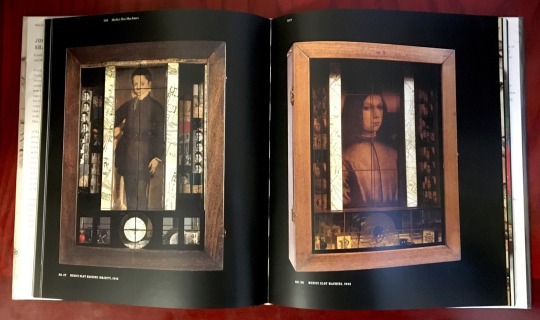
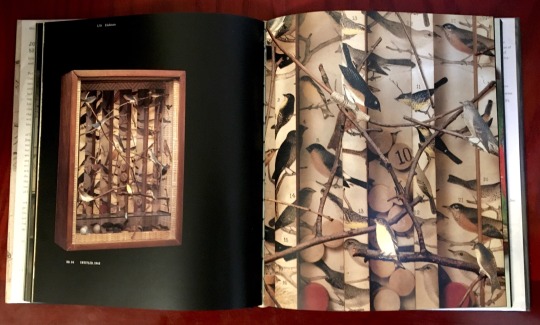


Book 377
Joseph Cornell: Shadowplay…Eterniday
Lynda Roscoe Hartigan, Walter Hopps, Richard Vine, and Robert Lehrman
Thames & Hudson 2003
Every few years or so, someone publishes a new book on Joseph Cornell (1903-1972) to mark a new retrospective or anniversary, and I seemingly need to buy all of them. This one was published to celebrate the centennial of Cornell’s birth, and it’s very well done. With over 200 illustrations of Cornell’s work, many in detail, it’s an impressive volume. What’s different about this book are the various perspectives offered about Cornell and his work from the four essayists, and the DVD-ROM included with the book that includes a compendium of the art and source materials, commentary by scholars and critics, and access to his experimental films.
#bookshelf#illustrated book#library#personal library#personal collection#books#book lover#bibliophile#booklr#joseph cornell#shadowplay eterniday#Lynda roscoe hartigan#Walter hopps#Richard vine#Robert lehrman#thames & hudson#Art
6 notes
·
View notes
Text
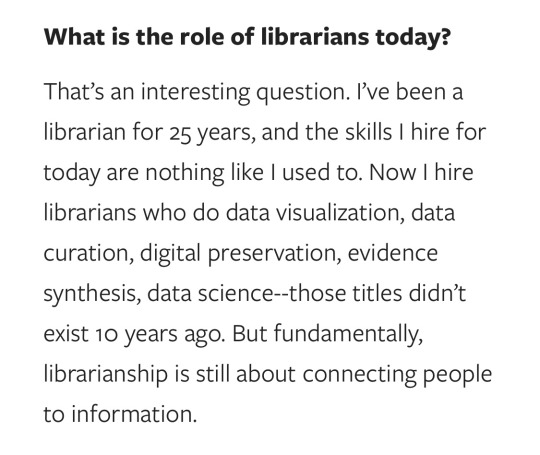

Been super interested in reading more about how more established librarians view the future of our work and spaces.
~Including a picture from working at the public library the other day, which I should do more often~
#cornell#cornell university#library#university librarian#academic library#research library#research librarian#academic librarian#academic libraries#college#studyblr#study break#study#books#university#school#studying#library and information science#master of information#public library#public libraries#work from home#work from library
5 notes
·
View notes
Text
youtube
Watch the American Climate Leadership Awards 2024 now: https://youtu.be/bWiW4Rp8vF0?feature=shared
The American Climate Leadership Awards 2024 broadcast recording is now available on ecoAmerica's YouTube channel for viewers to be inspired by active climate leaders. Watch to find out which finalist received the $50,000 grand prize! Hosted by Vanessa Hauc and featuring Bill McKibben and Katharine Hayhoe!
#ACLA24#ACLA24Leaders#youtube#youtube video#climate leaders#climate solutions#climate action#climate and environment#climate#climate change#climate and health#climate blog#climate justice#climate news#weather and climate#environmental news#environment#environmental awareness#environment and health#environmental#environmental issues#environmental justice#environment protection#environmental health#Youtube
17K notes
·
View notes
Photo

Uris Library, Cornell University, New York
1 note
·
View note
Text
Tues. April 11, 2023: A Promised Stretch of Good Weather to Support The Writing
image courtesy of Jill Wellington via pixabay.com
Tuesday, April 11, 2023
Waning Moon
Sunny and pleasant
Ready to curl up and catch up? It looks like we’re plunging straight into summer, skipping spring this week.
Friday was frustrating. On the upside, I managed to write 9 ½ pages on FALL FOREVER. I caught up with Thursday’s missed pages, wrote Friday’s pages, and worked ahead through…

View On WordPress
#ANGEL HUNT#baking#Bourne Bridge#boxes#Canaletto#Cape Cod#contest entries#curtains#dishwasher#Dramatists guild#FALL FOREVER#IceCream app#Katharine cornell#Laurette Taylor#leaf blowers#Legerdemain#library#Minnie Fiske#Process Muse#reading#road trip#sense memory stress#soup class#Spectrum#storage#Venice#Yoga
0 notes
Video
n58_w1150 by Biodiversity Heritage Library
Via Flickr:
The Garland of the year, or, The months: their poetry and flowers : London :Marcus Ward & Co.,[1873]. biodiversitylibrary.org/page/58434938
#Flowers in literature#Months#Poetry#Cornell University Library#bhl:page=58434938#dc:identifier=https://biodiversitylibrary.org/page/58434938#flickr#hawthorn#poem#m#may#Crataegus#quickthorn#thornapple#may-tree#whitethorn#mayflower#hawberry
4 notes
·
View notes
Photo
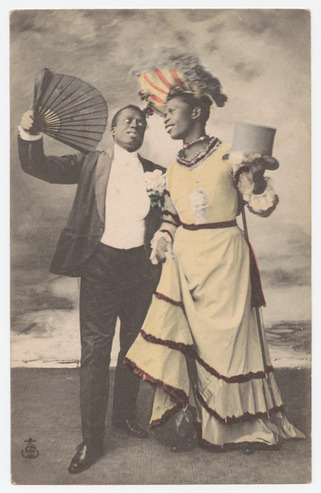
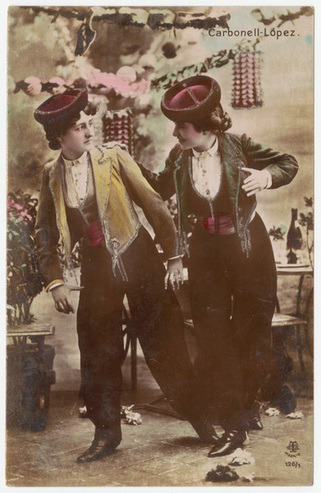

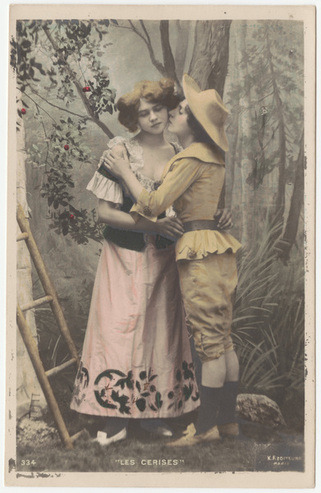

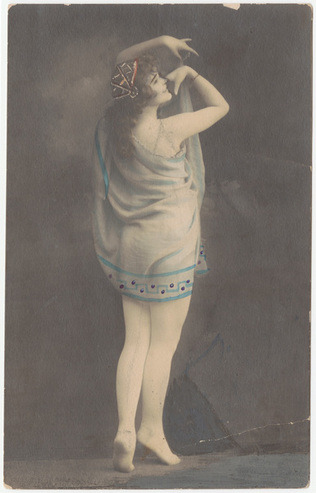



This collection of postcards of female and male impersonators and cross-dressing in Europe and the United States, 1900-1931, 1955 features copies of original postcards held by Cornell’s Human Sexuality Collection, part of Cornell Library’s Division of Rare and Manuscript Collections.
3K notes
·
View notes
Text
youtube
Watch the 2024 American Climate Leadership Awards for High School Students now: https://youtu.be/5C-bb9PoRLc
The recording is now available on ecoAmerica's YouTube channel for viewers to be inspired by student climate leaders! Join Aishah-Nyeta Brown & Jerome Foster II and be inspired by student climate leaders as we recognize the High School Student finalists. Watch now to find out which student received the $25,000 grand prize and top recognition!
#ACLA24#ACLA24HighSchoolStudents#youtube#youtube video#climate leaders#climate solutions#climate action#climate and environment#climate#climate change#climate and health#climate blog#climate justice#climate news#weather and climate#environmental news#environment#environmental awareness#environment and health#environmental#environmental issues#environmental education#environmental justice#environmental protection#environmental health#high school students#high school#youth#youth of america#school
17K notes
·
View notes
